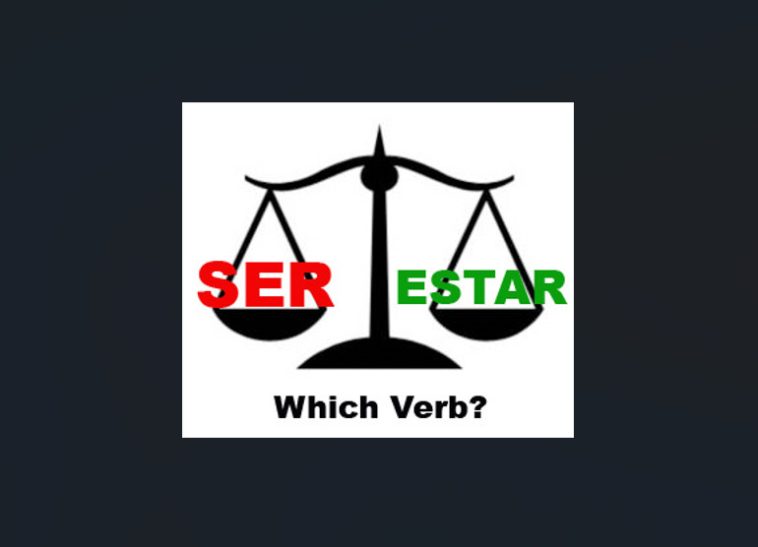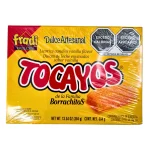Ser and Estar: Your Essential Spanish Guide
Conquer one of Spanish’s biggest challenges with clear explanations and a fun quiz!

Learning Spanish can be a wonderful and challenging task. One of the most common difficulties for students is knowing when to use the verbs Ser and Estar. Both translate to “to be” in English, but they have very different uses in Spanish. Don’t worry, by the end of this post, you’ll have a clearer idea!
Understanding Ser
We use Ser for things that are generally permanent, essential, or defining characteristics. Think of “DOCTOR” (Description, Origin, Characteristic, Time, Occupation, Relationship).
• Description/Characteristic (what something is): This refers to inherent qualities.
◦ Example: El agua es transparente. (The water is transparent.)
◦ Example: Las papas saladas no son sanas. (Salty potatoes are not healthy.)
◦ Example: Ella es muy alta. (She is very tall.)
◦ Example: Sergio es un muchacho muy inteligente. (Sergio is a very intelligent boy.)
• Origin/Nationality (where someone is from):
◦ Example: Julia es de Puerto Rico. (Julia is from Puerto Rico.)
◦ Example: Miguel es ecuatoriano. (Miguel is an Ecuadorian.)
• Characteristic (personality, material):
◦ Example: El bar es el centro de reunión. (The bar is the meeting center.)
◦ Example: El actor es chistoso. (Personality, the actor is funny, he is a funny person)
◦ Example: La mesa es de metal. (The table is of metal.)
• Time/Date (what time it is, days, dates):
◦ Example: Son las dos. (It is two o’clock.)
◦ Example: Mi cumpleaños es en diciembre. (My birthday is in December.)
• Occupation/Profession (what someone does as a job):
◦ Example: Mi mujer es enfermera. (My wife is a nurse.)
◦ Example: Sara es doctora. (Sara is a doctor.)
• Relationship/Possession (who someone is to someone else, or whose something is):
◦ Example: Las llaves son de Pedro. (The keys are Pedro’s.)
◦ Example: Gerardo es tu primo. (Gerardo is your cousin.)
Understanding Estar
We use Estar for temporary states, locations, and actions. Think of “PLACE” (Position, Location, Action, Condition, Emotion).
• Position (physical position):
◦ Example: El gato está sobre la alfombra. (The cat is on the rug.)
• Location (where something or someone is) (exception, location of events take ser, el terremoto fue en Alaska, La conferencia es en el auditorio A.)
◦ Example: El bar está en el centro. (The bar is downtown.)
◦ Example: Mi amiga está en el hospital. (My friend is in the hospital.)
• Action (present progressive, -ing verbs): This is always formed with Estar + gerund.
◦ Example: Estoy preparando la cena. (I am preparing dinner.)
◦ Example: Los estudiantes están aprendiendo español este año. (The students are learning Spanish this year.)
◦ Example: Mi amigo está leyendo el libro. (My friend is reading the book.)
• Condition (state, current status, physical condition):
◦ Example: El café está frío. (The coffee is cold.)
◦ Example: El pájaro de mi tía está muerto. (My aunt’s bird is dead.)
◦ Example: El viernes va a estar nublado. ( Friday is going to be cloudy) Weather has many different states.
◦ Example: Mi amiga está enferma. (My friend is sick.)
• Emotion (how someone currently feels, someone’s mood):
◦ Example: Los profesores están orgullosos de sus alumnos. (The teachers are proud of their students.)
◦ Example: Vosotros estáis hartos de la situación. (You all are fed up with the situation.)
◦ Example: Edward está triste. (Edward is sad.)
Practice Time!
Choose the correct form of ser or estar to complete each sentence.
1. Mi hermana ______ enfermera en un hospital grande. a) es b) está
2. Nosotros ______ en la cafetería ahora mismo. a) somos b) estamos
3. ¿De dónde ______ usted? a) es b) está
4. La puerta ______ cerrada. a) es b) está
5. El concierto ______ a las ocho de la noche. a) es b) está
6. Yo ______ cansado hoy. a) soy b) estoy
7. Mis amigos ______ españoles. a) son b) están
8. Ella ______ estudiando para el examen final. a) es b) está
9. El coche ______ azul. a) es b) está
10. El agua ______ fría porque ______ en la nevera. a) es / está b) está / está c) es / es d) está / es
11. Las papas saladas no ______ sanas. a) son b) están
12. Mi padre ______ abogado. a) es b) está
13. ¿Qué hora ______? ______ las tres de la tarde. a) es / Es b) está / Está c) es / Son d) está / Son
14. El gato ______ sobre la alfombra. a) es b) está
15. Los estudiantes ______ aprendiendo español este año. a) son b) están
16. La mesa ______ de metal. a) es b) está
17. Mi amiga ______ en el hospital. a) es b) está
18. Nosotros ______ orgullosos de nuestros alumnos. a) somos b) estamos
19. Este problema ______ muy difícil. a) es b) está
20. La comida mexicana ______ deliciosa. a) es b) está
——————————————————————————–
Scroll down for answers!
…
…
…
…
…
…
…
…
…
…
…
…
…
…
…
…
…
…
…
…
…
…
…
…
…
…
…
…
…
…
…
…
…
…
Answers and Explanations:
1. Mi hermana es enfermera en un hospital grande. Answer: a) es Explanation: We use ser for professions or occupations. It’s a defining characteristic of what someone “is” professionally.
2. Nosotros estamos en la cafetería ahora mismo. Answer: b) estamos Explanation: We use estar for location. It tells where someone or something is at a particular moment.
3. ¿De dónde es usted? Answer: a) es Explanation: We use ser for origin or nationality. It asks about where a person comes from.
4. La puerta está cerrada. Answer: b) está Explanation: We use estar for conditions or temporary states. The door is currently in a “closed” state. The current status of the door is closed (as opposed to open).
5. El concierto es a las ocho de la noche. Answer: a) es Explanation: We use ser to tell time or the time of an event.
6. Yo estoy cansado hoy. Answer: b) estoy Explanation: We use estar for temporary emotions or physical states. “Cansado” (tired) is how you feel right now.
7. Mis amigos son españoles. Answer: a) son Explanation: We use ser for nationality. It describes a permanent characteristic of their identity.
8. Ella está estudiando para el examen final. Answer: b) está Explanation: We use estar with the gerund (the -ando/-iendo form) to describe an ongoing action. This is called the present progressive tense.
9. El coche es azul. Answer: a) es Explanation: We use ser for descriptions, especially permanent characteristics like color. It’s an inherent quality of the car. A black banana would be estar, its color is not permanent.
10. El agua está fría porque está en la nevera. Answer: b) está / está Explanation: We use estar for the condition or current status (cold) of the water and for its location (in the fridge).
11. Las papas saladas no son sanas. Answer: a) son Explanation: We use ser for inherent or defining characteristics. Salty potatoes inherently are not healthy.
12. Mi padre es abogado. Answer: a) es Explanation: We use ser for professions. Being a lawyer is someone’s occupation.
13. ¿Qué hora es? Son las tres de la tarde. Answer: c) es / Son Explanation: We use ser to tell time. For “what time is it?” use “¿Qué hora es?”, and for times like “three o’clock” use “Son las…”.
14. El gato está sobre la alfombra. Answer: b) está Explanation: We use estar for the physical position / location of someone or something.
15. Los estudiantes están aprendiendo español este año. Answer: b) están Explanation: We use estar with the -ando/-iendo form (gerund) to describe ongoing actions.
16. La mesa es de metal. Answer: a) es Explanation: We use ser to describe the material something is made of, as it’s a permanent characteristic.
17. Mi amiga está en el hospital. Answer: b) está Explanation: We use estar for location, telling where someone or something is.
18. Nosotros estamos orgullosos de nuestros alumnos. Answer: b) estamos Explanation: We use estar to express emotions, current mood, temporary feelings.
19. Este problema es muy difícil. Answer: a) es Explanation: We use ser for inherent or defining characteristics. The problem is inherently difficult.
20. La comida mexicana es deliciosa. Answer: a) es Explanation: We use ser for general descriptions (generalizations) or characteristics, like how a type of food inherently is.
——————————————————————————–
We hope this post helps you understand the difference between Ser and Estar! Keep practicing, and you’ll master these important verbs!



